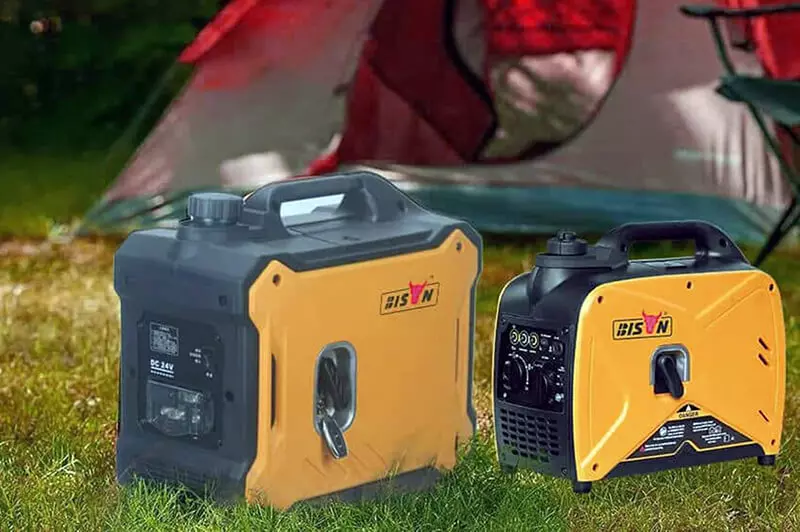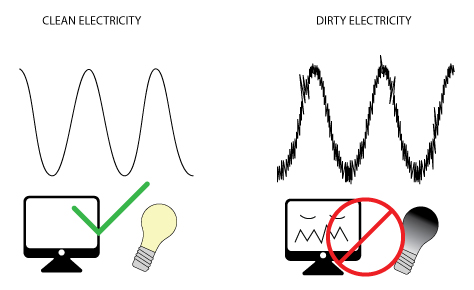To clean generator power, disconnect it first and then remove dirt using compressed air or a soft cloth. Keeping your generator in top-notch condition not only prolongs its lifespan but also ensures it operates efficiently when you need it most.
Regular maintenance is key, and part of this involves cleaning the generator power to prevent buildup and potential damage. Generators, being the lifeline during power outages, require attention to detail during cleaning to avoid issues. This process can seem daunting, but with the right tools and a bit of knowledge, it’s a manageable task.
Ensuring your generator is clean and well-maintained means you’re always prepared, regardless of unexpected power cuts. This guide aims to simplify the cleaning process, making it accessible to anyone looking to keep their generator running smoothly.
Introduction To Generator Maintenance
Maintaining your generator is key to reliable operation. Regular cleaning ensures optimal performance. It also extends the unit’s lifespan. Understand the basics of generator upkeep for smooth functioning.
Importance Of Clean Power
Clean power from your generator is crucial. It prevents damage to connected devices. It also ensures consistent energy supply. Regular maintenance removes dirt and debris, which can cause power issues.
Consequences Of Neglect
Neglecting generator care can lead to serious problems. Unwanted downtime and costly repairs are common issues. Regular checks can catch problems early, saving time and money.
Identifying Common Contaminants
Keeping your generator clean ensures its efficiency and longevity. Over time, various contaminants can impair its function. Let’s pinpoint these common culprits.
Dirt And Dust Accumulation
Dirt and dust are the most frequent offenders. These particles can clog air filters and cooling fins. This results in overheating and reduced power output. Regular cleaning schedules can prevent these issues. Use compressed air or a soft brush to clear these areas.
Oil And Fuel Spills
Oil and fuel spills pose a risk not only to the generator’s performance but also to safety. Spills can lead to malfunctions and fire hazards. Check for leaks regularly. Clean spills immediately with an appropriate cleaning agent and a cloth. Dispose of the waste material safely.
Proper maintenance includes:
- Inspecting for dirt and debris
- Checking for oil and fuel spills
- Cleaning affected parts promptly
| Contaminant | Impact | Prevention/Cleaning |
|---|---|---|
| Dirt and Dust | Blocks airflow, causes overheating | Use compressed air, soft brush |
| Oil and Fuel | Creates fire hazard, impairs function | Clean with proper agents, cloth |
Identify these contaminants early to keep your generator running smoothly.
Preventive Measures
Maintaining a generator’s power cleanliness is vital. It ensures longevity and reliability. Preventive measures play a crucial role. They prevent issues before they arise. Follow these steps to keep your generator in top condition.
Regular Inspection
Conduct regular checks on your generator. Look for any signs of wear and tear. Check for loose connections or damaged parts. Ensure that the generator is clean. Oil and coolant levels should be correct. Replace filters as needed. Keep a log of all inspections.
Environmental Considerations
- Store your generator in a clean, dry place.
- Avoid exposure to extreme temperatures.
- Ensure good ventilation around the generator.
- Guard against dust and moisture.
By taking these environmental steps, you protect your generator. It will operate efficiently for years.
Cleaning Electrical Components
Keeping your generator’s electrical components clean is crucial. It ensures safety and efficiency. Let’s dive into how to clean these parts properly.
Safety Precautions
- Turn off the generator and disconnect it from any power source.
- Wear insulating gloves and safety goggles to protect yourself.
- Keep a fire extinguisher nearby in case of an emergency.
- Avoid using water or liquid cleaners directly on electrical components.
Recommended Cleaning Agents
For cleaning electrical parts of a generator, use safe agents:
| Cleaning Agent | Use For |
|---|---|
| Compressed Air | Removing dust and loose particles |
| Isopropyl Alcohol | Cleaning surfaces without leaving residue |
| Contact Cleaner | Electrical contacts and connectors |
Follow these steps for a safe and effective cleaning process:
- Use compressed air to blow away dust.
- Apply a small amount of isopropyl alcohol on a clean cloth.
- Gently wipe the electrical components.
- For tough grime, use contact cleaner as directed.
Remember, regular maintenance keeps your generator running smoothly.
Fuel System Maintenance
Fuel System Maintenance is key to a healthy generator. It ensures your generator runs smoothly and efficiently. Over time, fuel systems can gather dirt and debris. This can lead to problems. Proper maintenance helps avoid these issues.
Changing Filters
Clean filters are a must for a smooth-running generator. They keep dirt and debris out. Change filters regularly to avoid clogs.
- Air filters stop dirt from entering the engine.
- Fuel filters keep the fuel clean.
- Oil filters protect the engine from contaminants.
Check your generator’s manual for the right time to change filters.
Stabilizing Fuel Supply
Stable fuel helps your generator start easily. It prevents fuel from going bad.
- Use a fuel stabilizer to keep fuel fresh.
- Add it to your fuel tank as directed.
- Run your generator for a few minutes. This spreads the stabilizer.
This practice is especially important before long storage periods.
Air Flow Optimization
Clean power starts with efficient air flow in generators. Proper air flow ensures cool operation and extends the generator’s life. Below are steps to optimize air flow in your generator.
Air Filter Servicing
Start with the air filter, a critical component for optimal air flow. A dirty filter restricts air, causing poor performance. Regular maintenance is key.
- Turn off the generator.
- Remove the air filter cover.
- Clean or replace the filter as needed.
Follow the manufacturer’s guidelines. They provide the servicing intervals. Some filters are washable while others are disposable.
Ventilation Improvements
Generators need cool air for optimal function. Ensure the area around your generator is clear. Remove any obstructions that block air flow.
- Inspect the generator’s surroundings.
- Remove debris and materials near vents.
- Check for any blockages around the unit.
Consider adding external fans if the unit is in a confined space. This helps move hot air away from the generator. Remember, a cooler generator is a happier generator!
Battery Care
Battery care is crucial for maintaining your generator’s power. A well-maintained battery ensures reliable starts and efficient operation. Follow these steps to keep your generator’s battery in top condition.
Terminal Cleaning
Dirt and corrosion can impair battery terminals. Regular cleaning is essential. Use a mix of baking soda and water. Apply with a toothbrush, then rinse. Dry the terminals after. Coat with petroleum jelly to prevent future corrosion.
Voltage Checks
Regular voltage checks keep batteries healthy. Use a multimeter for this task. Turn off the generator first. Connect the multimeter’s leads to the corresponding terminals. A healthy 12V battery should show about 12.6 volts. Charge the battery if the voltage is low.
Remember to disconnect the battery before cleaning. Always wear protective gloves and goggles. Keep your generator’s manual handy for specific instructions on battery maintenance. These simple steps will extend the life of your generator’s battery.

Credit: www.bison-machinery.com
Professional Servicing
Professional Servicing ensures your generator runs smoothly. Generators need regular checks. Professional servicing spots issues early. This maintains power quality. It keeps your generator reliable.
When To Seek Help
- Unusual noises during operation
- Start-up problems
- Power output inconsistencies
- Regular maintenance time
Choosing A Service Provider
Choose experienced technicians. Look for licensed service providers. Check customer reviews. Ensure they specialize in your generator’s brand. Compare service costs.
| Factor | Details to Consider |
|---|---|
| Experience | Years in business, types of generators serviced |
| Licensing | Valid and up-to-date professional licenses |
| Reputation | Positive customer feedback, high rating |
| Cost | Transparent pricing, no hidden fees |
Troubleshooting Tips
Tackling generator power issues can be a breeze with the right troubleshooting tips. Whether you’re facing unexpected outages or erratic power supply, identifying common problems is the first step. Let’s dive into DIY solutions that can save you time and money.
Common Issues
Generators can have several issues. Find the most frequent ones below:
- Power fluctuations – Lights flicker or appliances struggle.
- Start-up failures – Generator won’t kick into action.
- Fuel problems – Generator runs rough or not at all.
- Battery issues – Dead or weak battery stops start-up.
Diy Solutions
Simple fixes can often restore generator power. Try these steps:
- Check oil and fuel levels. Refill if low.
- Clean air filters for better engine breath.
- Test battery voltage with a multimeter.
- Inspect spark plugs for dirt or damage.
Performing regular maintenance prevents many problems. Clean parts and tight connections keep your generator reliable.

Credit: baileylineroad.com
Long-term Storage Best Practices
Ensuring your generator remains in peak condition involves proper long-term storage. Follow these best practices to maintain your generator’s power when it’s not in use.
Clean And Dry Environment
Store your generator in a place free from dirt and moisture. A clean and dry environment prevents rust and corrosion, critical for the generator’s components.
- Avoid damp locations to prevent electrical faults.
- Use covers that allow airflow to keep the unit dry.
- Ensure the space is free of dust and debris.
Periodic Engine Runs
Regular engine runs keep the generator in good shape. They lubricate the engine parts and prevent engine seize-up.
- Run the engine for at least 30 minutes every three months.
- Check for smooth operation during these runs.
- Record each run in a maintenance log for reference.

Credit: www.wincogen.com
Frequently Asked Questions
How Often Should Generators Be Cleaned?
Regular cleaning is recommended every 6 months, or after extended use, to maintain optimal performance.
Can I Clean A Generator’s Carburetor Myself?
Yes, with the right tools and instructions, a carburetor can be cleaned by following the manufacturer’s manual.
What Materials Are Safe For Cleaning Generators?
Use a soft cloth, non-abrasive brushes, and appropriate cleaners designed for generators to prevent damage.
Does Cleaning Improve Generator Efficiency?
Cleaning dust and debris from a generator helps ensure efficient operation and prolongs its lifespan.
What Safety Precautions Are Needed When Cleaning A Generator?
Always turn off and disconnect the generator, and allow it to cool down before cleaning to avoid injury.
Conclusion
Maintaining a clean generator is crucial for optimal performance and longevity. By following the steps outlined, you can ensure your power source remains reliable. Regular cleaning prevents buildup and potential malfunctions, keeping your generator ready for any situation. Embrace these tips for a spotless and efficient energy solution.




